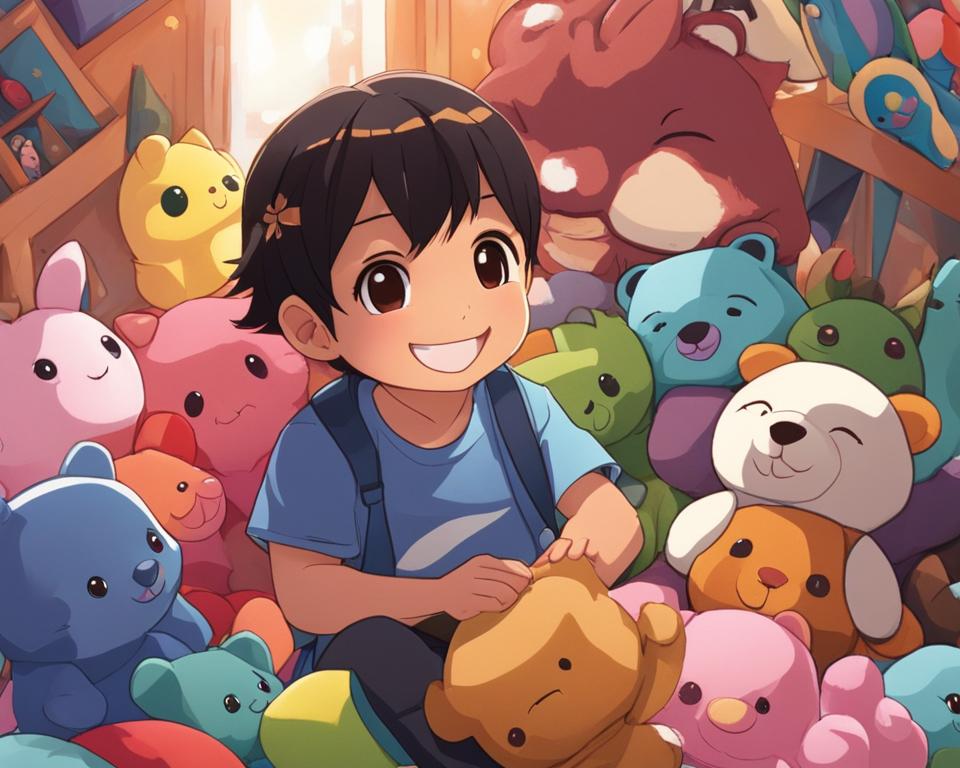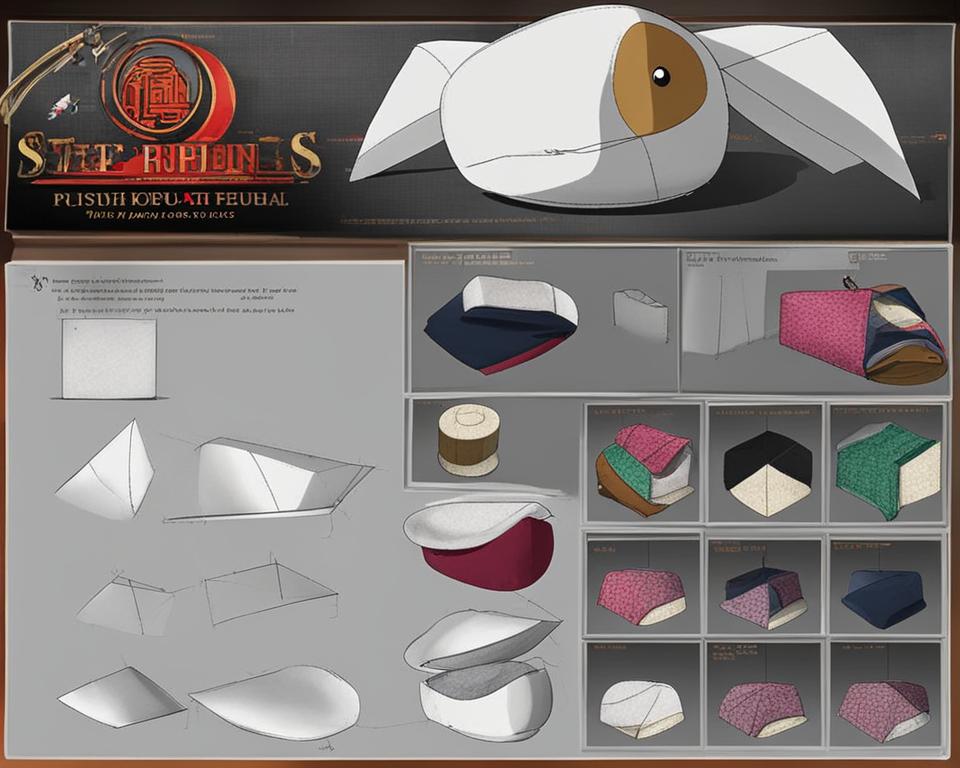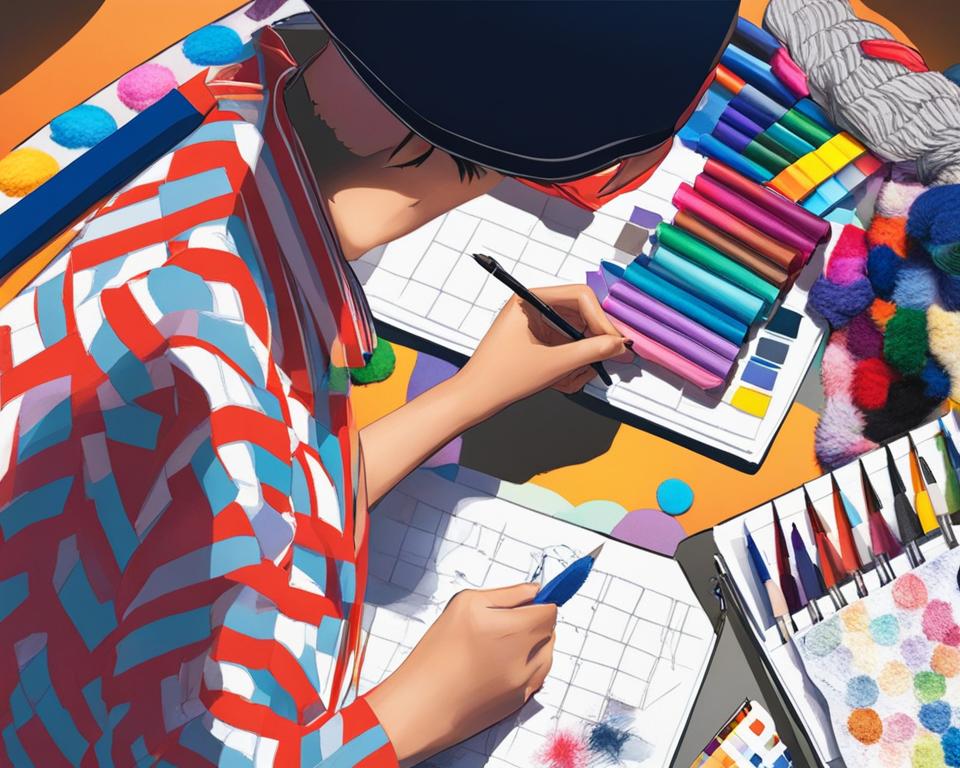Stuffed animals are a popular gift for children of all ages, but it’s important to choose the right size for your child. Every child develops at their own pace, but babies as young as a few days old can start handling small, soft stuffed animals. However, they won’t be able to fully take care of a stuffed animal until about 18 months or 2 years old. For babies and toddlers, it’s best to choose a medium-sized plush toy that they can easily handle. As children get older, they may prefer larger and more complex stuffed animals. Quality is also important when choosing a stuffed animal, ensuring that it’s made from safe and environmentally friendly materials. Allergies should be taken into consideration as well, and hypoallergenic options are available. Ultimately, the ideal size of a stuffed animal will depend on the child’s age and preferences.
Key Takeaways:
- Choosing the right size plush toy is important for your child’s development and safety.
- Babies and toddlers can handle small plush toys, while older children may prefer larger options.
- Quality and materials are crucial when selecting a stuffed animal.
- Consider any allergies your child may have and opt for hypoallergenic options.
- The ideal size of a stuffed animal depends on the child’s age and preferences.
The Benefits of Plush Toys for Early Development
Plush toys not only bring joy to children, but they also play a vital role in their social and emotional development. These soft and cuddly companions provide comfort and security, fostering a sense of independence and confidence in children. Research has shown that children often form strong attachments to their plush toys, which aids in their emotional growth and encourages self-expression.
Beyond emotional support, plush toys offer valuable sensory stimulation. The different textures, shapes, and sizes of plush toys allow children to explore and engage their senses, promoting cognitive and motor skill development. By squeezing, hugging, and manipulating their plush toys, children enhance their fine motor skills and hand-eye coordination.
Plush toys also serve as storytelling tools, igniting the imagination and enhancing creativity. Children often engage in imaginative play with their plush toys, creating unique narratives and building problem-solving skills. This imaginative play helps children develop their language and communication skills, as they give voices and personalities to their plush companions.
Furthermore, plush toys can be utilized during various developmental milestones. For instance, during potty training, a child may find comfort and familiarity in having their plush toy by their side. Plush toys can also provide a sense of security during sleep training, helping children transition to their own beds and creating a calm and soothing environment.
In conclusion, plush toys offer numerous benefits for a child’s early development. From emotional support to sensory stimulation and imaginative play, these soft and cuddly companions play a crucial role in nurturing a child’s social, emotional, and cognitive growth. By choosing the right plush toy and encouraging meaningful interactions, parents can provide their children with a source of comfort, creativity, and lifelong memories.
Choosing the Right Plush Toy for Your Child’s Preferences
When it comes to selecting a stuffed animal for your child, it’s essential to consider their preferences. Every child has their own unique tastes and interests, so choosing a plush toy that aligns with their current likes can make all the difference in their enjoyment and engagement. From simple and soft stuffed animals for babies and toddlers to more complex and realistic options for older children, there are countless choices available to cater to your child’s preferences.
One important factor to consider is whether your child has a favorite character from a movie, TV show, or book. Many children develop strong attachments to specific characters, and having a plush toy of their favorite character can bring them a sense of comfort and joy. Whether it’s a cuddly dinosaur, a beloved superhero, or a furry friend from their favorite show, these character-themed plush toys can become treasured companions that spark imaginative play and storytelling.
Quality is another vital aspect to keep in mind when choosing a stuffed animal. Opt for plush toys made of high-quality materials that are safe for your child to play with. Ensure that the toy does not have any small parts or loose stitching that could pose a choking hazard. Hypoallergenic options are also available for children with allergies, ensuring that they can enjoy the comfort of a plush toy without any adverse reactions.
Child’s Preferences Checklist:
- Consider their current likes and interests
- Find plush toys of their favorite characters
- Choose high-quality materials and construction
- Ensure there are no small parts or choking hazards
- Explore hypoallergenic options if needed

In conclusion, selecting the right plush toy for your child involves considering their preferences and interests. From character-themed options to soft and cuddly companions, there are numerous choices available to cater to your child’s unique tastes. Prioritize high-quality materials and construction, ensuring the safety of the toy. By choosing a plush toy that aligns with your child’s preferences, you can provide them with a sense of comfort, joy, and companionship that will bring them endless hours of playtime fun.
Keeping Your Plush Toys Safe and Clean
As a responsible parent, ensuring the safety and cleanliness of your child’s plush toys is of utmost importance. Regular hygiene practices not only promote a healthy environment but also extend the lifespan of these cherished companions. To keep plush toys safe and clean, it is essential to follow a few simple steps.
Maintaining Regular Cleaning
Regular cleaning is crucial to prevent the buildup of dirt, dust, and bacteria on plush toys. Most plush toys can be washed in a machine or spot cleaned, depending on the material and manufacturer’s instructions. It is recommended to check the toy’s label for specific cleaning guidelines.
“Regular cleaning is crucial to prevent the buildup of dirt, dust, and bacteria on plush toys.”
For machine washable plush toys, use a gentle cycle with mild detergent and cold water. Ensure that the toy is securely placed in a laundry bag or pillowcase to prevent any damage. Air drying is usually the best option, as heat from drying machines can cause deformation or damage to the toy.
Inspecting for Wear and Tear
To maintain the safety of plush toys, it is important to periodically inspect them for any signs of wear and tear. Check for loose stitching, detached parts, or small accessories that could pose a choking hazard. If any damage is found, it is advisable to repair or replace the toy immediately.
Regular cleaning and inspection help keep plush toys safe and extend their lifespan.
Promoting Good Hygiene Practices
Encouraging good hygiene practices can further ensure the safety and cleanliness of plush toys. Teach your child not to share their toys with sick children to prevent the spread of germs. Additionally, it is essential to wash hands regularly, especially before and after playing with plush toys.
“Encouraging good hygiene practices can further ensure the safety and cleanliness of plush toys.”
By following these simple steps, you can maintain the safety and cleanliness of your child’s plush toys, providing them with a healthy and enjoyable playtime experience.
Table: Plush Toy Cleaning Guidelines
| Type of Plush Toy | Cleaning Method |
|---|---|
| Machine Washable | Use a gentle cycle with mild detergent and cold water. Place the toy in a laundry bag or pillowcase to prevent damage. Air dry. |
| Spot Clean Only | Gently wipe the surface of the toy with a damp cloth or sponge using mild detergent. Allow the toy to air dry. |
| Battery-Operated | Remove any detachable parts and clean them separately following the specific instructions provided by the manufacturer. Use a damp cloth to wipe the surface of the toy. |
Remember, proper hygiene practices are essential for the safety and cleanliness of plush toys. Regular cleaning and inspection, along with promoting good hygiene habits, will ensure that your child’s plush toys remain safe and enjoyable for years to come.
Conclusion
Small plushies, also known as miniature cuddly toys or pocket-sized plushies, are adorable little critters that hold big fun for children. They not only provide comfort and companionship but also contribute to the growth and development of children in various ways.
Choosing the right size plush toy is crucial to ensure the child’s safety and enjoyment. Every child is unique, and their age and preferences should be considered when selecting a plush toy. Whether it’s a tiny soft friend for a newborn or a more complex stuffed animal for an older child, the ideal plush toy will align with the child’s interests and offer a sense of comfort and joy.
Plush toys play a significant role in a child’s social and emotional development. They provide support in stressful situations, encourage independence and imagination, and offer sensory stimulation through different textures. These delightful companions can also be utilized during potty training and sleep training to create a familiar and comfortable experience for the child.
When it comes to maintaining hygiene for plush toys, regular cleaning and inspection are essential. Following the manufacturer’s cleaning instructions, conducting periodic checks for wear and tear, and encouraging good hygiene practices can keep the plush toys safe and clean for playtime.
With the right small plushie, children can enjoy big fun, create lasting memories, and continue to experience the joy and comfort that these adorable little critters provide.
FAQ
At what age can babies start playing with stuffed animals?
Babies as young as a few days old can start handling small, soft stuffed animals. However, they won’t be able to fully take care of a stuffed animal until about 18 months or 2 years old.
What size plush toy is best for babies and toddlers?
For babies and toddlers, it’s best to choose a medium-sized plush toy that they can easily handle.
As children get older, do they prefer larger stuffed animals?
Yes, as children get older, they may prefer larger and more complex stuffed animals.
What should I consider when choosing a stuffed animal?
It’s important to consider the child’s age and preferences when choosing a stuffed animal. Quality and safety are also important factors to consider.
Are hypoallergenic plush toys available?
Yes, hypoallergenic plush toy options are available for children with allergies.
How do plush toys aid in a child’s development?
Plush toys provide comfort, sensory stimulation, and can be used as storytelling tools to encourage imagination and creativity. They also help children develop emotional support and independence.
How should I clean and maintain plush toys?
Plush toys can be washed in a machine or spot cleaned. It’s important to follow the manufacturer’s cleaning instructions and periodically inspect the toy for wear and tear. Good hygiene practices, such as not sharing plush toys with sick children, should also be encouraged.





